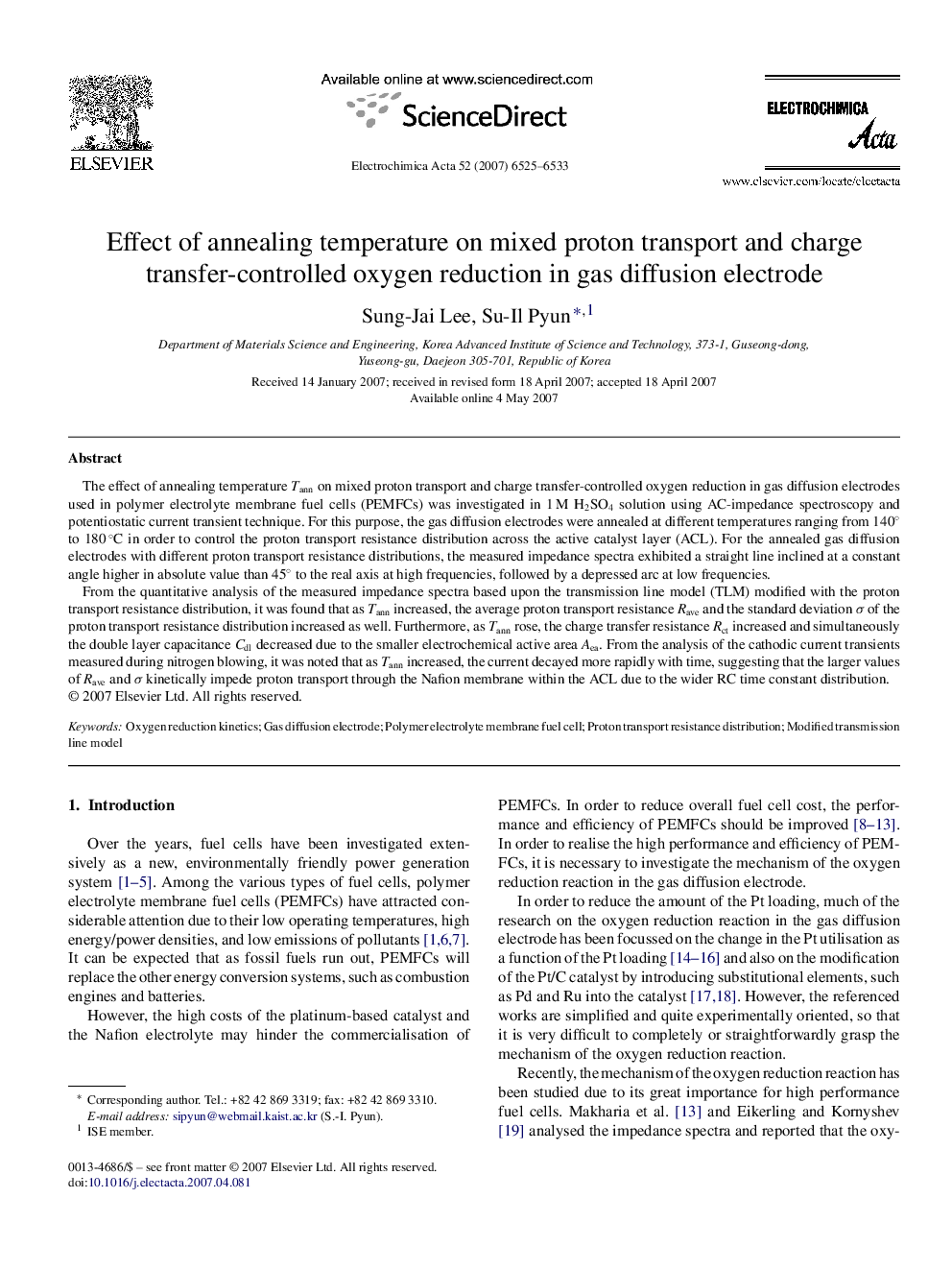| Article ID | Journal | Published Year | Pages | File Type |
|---|---|---|---|---|
| 194435 | Electrochimica Acta | 2007 | 9 Pages |
The effect of annealing temperature Tann on mixed proton transport and charge transfer-controlled oxygen reduction in gas diffusion electrodes used in polymer electrolyte membrane fuel cells (PEMFCs) was investigated in 1 M H2SO4 solution using AC-impedance spectroscopy and potentiostatic current transient technique. For this purpose, the gas diffusion electrodes were annealed at different temperatures ranging from 140° to 180 °C in order to control the proton transport resistance distribution across the active catalyst layer (ACL). For the annealed gas diffusion electrodes with different proton transport resistance distributions, the measured impedance spectra exhibited a straight line inclined at a constant angle higher in absolute value than 45° to the real axis at high frequencies, followed by a depressed arc at low frequencies.From the quantitative analysis of the measured impedance spectra based upon the transmission line model (TLM) modified with the proton transport resistance distribution, it was found that as Tann increased, the average proton transport resistance Rave and the standard deviation σ of the proton transport resistance distribution increased as well. Furthermore, as Tann rose, the charge transfer resistance Rct increased and simultaneously the double layer capacitance Cdl decreased due to the smaller electrochemical active area Aea. From the analysis of the cathodic current transients measured during nitrogen blowing, it was noted that as Tann increased, the current decayed more rapidly with time, suggesting that the larger values of Rave and σ kinetically impede proton transport through the Nafion membrane within the ACL due to the wider RC time constant distribution.
